A simple accelerometer (an instrument for measuring acceleration) can be made in the form of a tube filled with a liquid and bent as shown. During motion, the level of the liquid in the left arm will be at a height h1 and in the right arm at a height h2. Determine the acceleration a of a carriage in which the accelerometer is installed, assuming that the diameter of the tube is much smaller than h1 and h2.

g(h2+h1)h2−h1
g(h2h1)h2+h1
g(h2−h1)h2+h1
g(h2h1)h2−h1
The correct Answer is:C
tanϕ=ag=h2−h1h2+h1⇒a=g(h2−h1)h2+h1
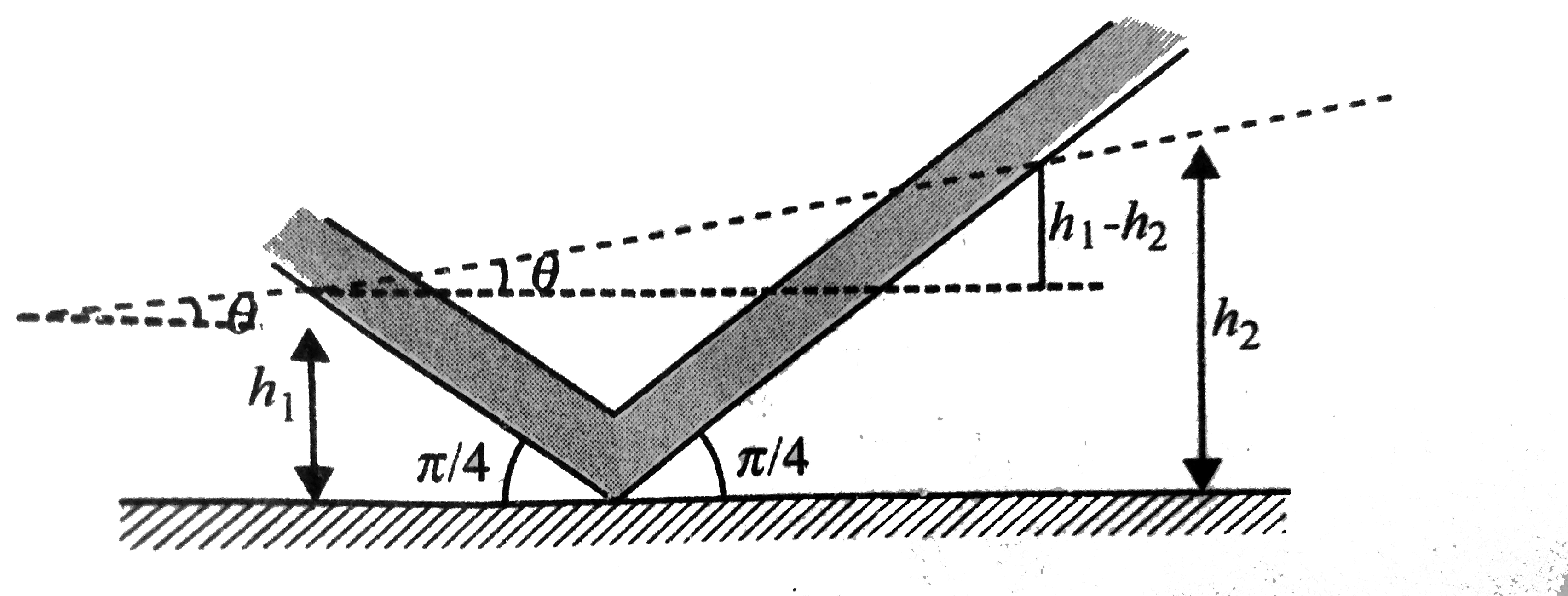
Topper's Solved these Questions
- FLUID MECHANICSBOOK - CENGAGE PHYSICSCHAPTER - FLUID MECHANICSEXERCISE - Single Correct
95 Videos
- FLUID MECHANICSBOOK - CENGAGE PHYSICSCHAPTER - FLUID MECHANICSEXERCISE - Multipe Correct
15 Videos
- FLUID MECHANICSBOOK - CENGAGE PHYSICSCHAPTER - FLUID MECHANICSEXERCISE - Exercise 4.4
10 Videos
- DIMENSIONS & MEASUREMENTBOOK - CENGAGE PHYSICSCHAPTER - DIMENSIONS & MEASUREMENTEXERCISE - Integer
2 Videos
- GRAVITATIONBOOK - CENGAGE PHYSICSCHAPTER - GRAVITATIONEXERCISE - INTEGER_TYPE
1 Video
Similar Questions
_S01_023_Q01.png)
An L shaped glass tube is kept inside a bus that is moving with constant acceleration during the motion the level of the liquid in the left arm is at 12 cm whereas in the right arm it is at 8 cm when the orientation of the tube is as shown assuming that the diameter of the tube is much smaller than levels of the liquid and neglecting effect of surface tension, acceleration of the bus find the (g=10m/s2).
View SolutionA bent tube is lowered into a water stream as shown in figure. The velocity of the stream is V1. The closed upper end is located at a height h0 and has a small orifice. To what height h will the liquid get spurt? brgt

View Solution
Knowledge Check
A cylinder is filled with non viscous liquid of density d to a hegiht h0 and a hole is made at a height h1 from the bottom of the cylinder. The velocity of liquid issuing out of the hole is
A√(2gh0)B√2g(h0−h1)C√dgh1D√dgh0An L shaped glass tube is kept inside a bus that is moving with constant acceleration. During the motion, the level of the liquid in the left arm is at 12cm whereas of the tube is as shown. Assuming that the diameter of the tube is much smaller then levels of the liquid and neglecting effect of surface tension, acceleration of the bus will be (g=10m/s2)
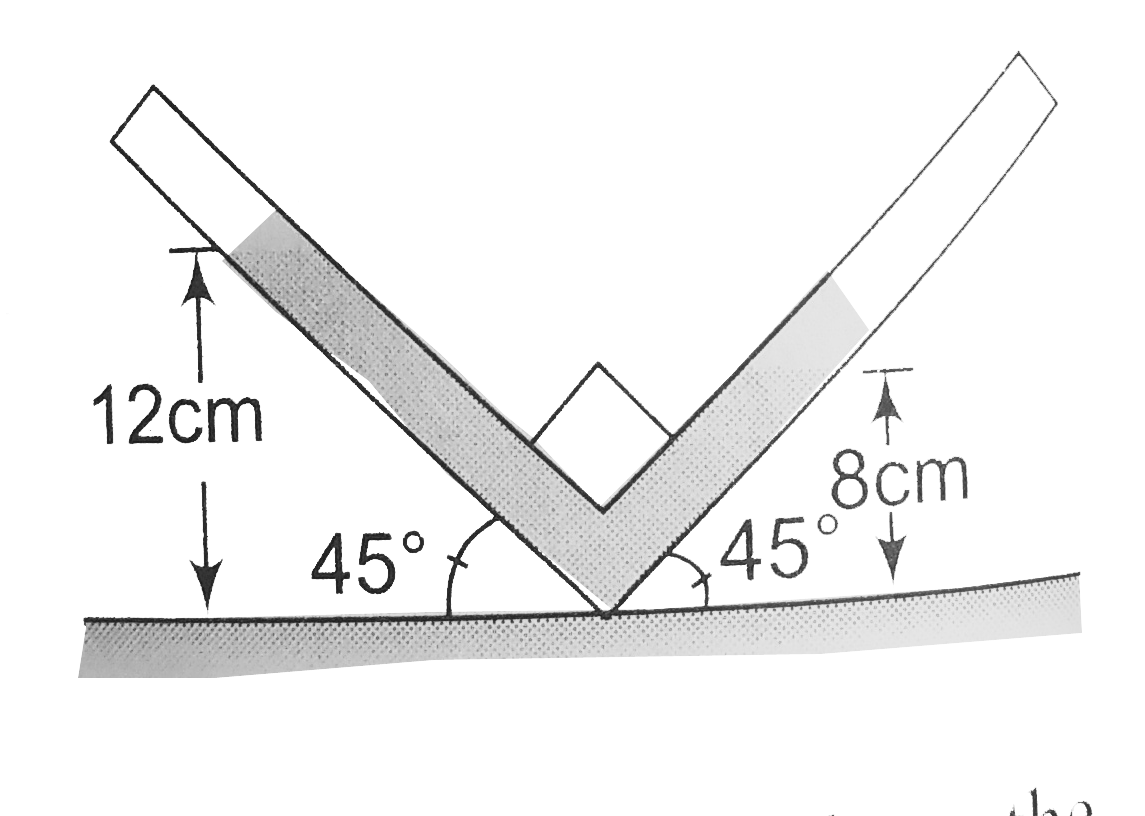 A1m/s2B2m/s2C4m/s2D5m/s2
A1m/s2B2m/s2C4m/s2D5m/s2The rise of liquid into capillary tube is h1. If the apparatus is taken in a lift moving up with acceleration the height is h2 then
Ah1=h2Bh1>h2Ch2>h1Dh2=0
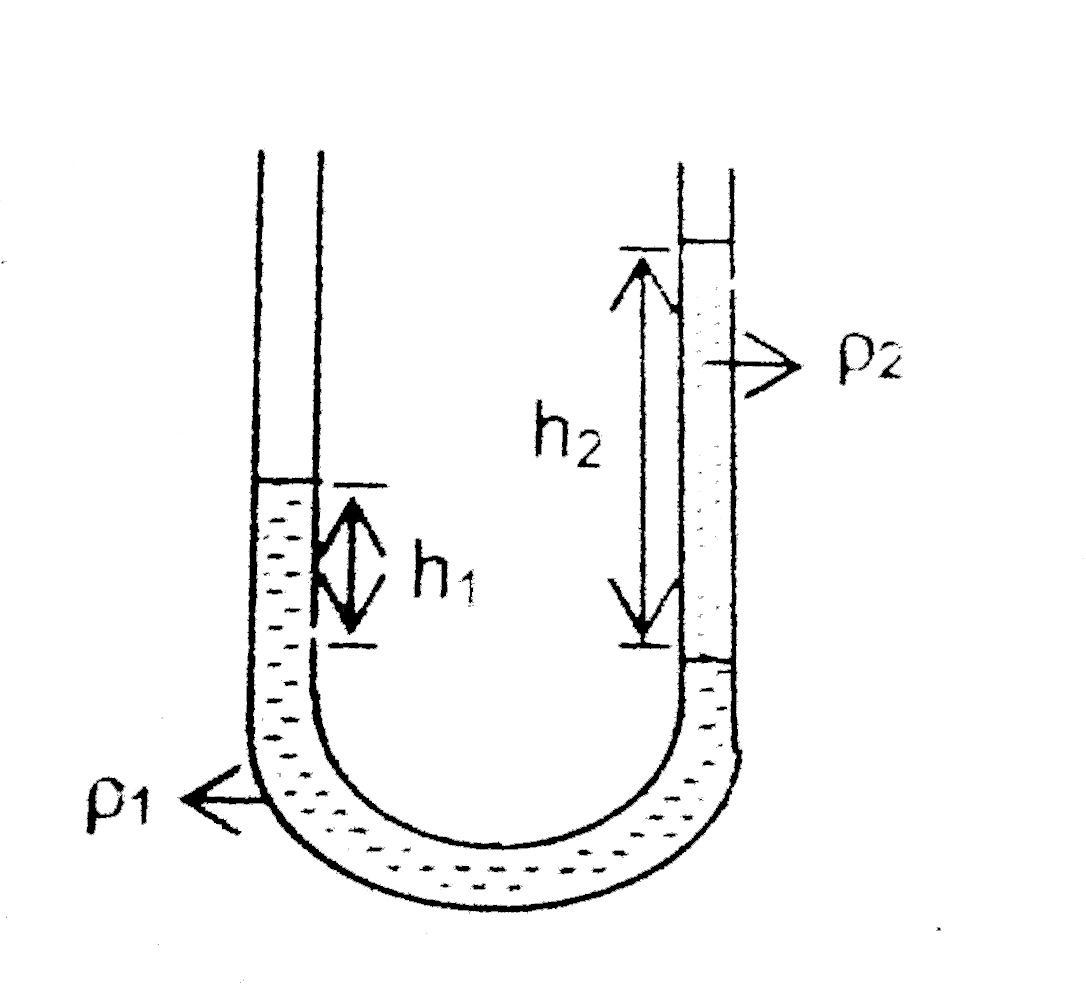
Two liquids which do not react chemically are placed in a bent tube as shown in figure. The height of the liquids above their surface of separation are
View SolutionWater rises to a height h1 in a capillary tube in a stationary lift. If the lift moves up with uniform acceleration it rises to a height h2, then acceleration of the lift is
View SolutionIF the diameter of a capillary tube is doubled, then the height of the liquid that will rise is
View SolutionA wooden cylinder of diameter 4 r, height H and density ρ/3 is kept on a hole of diameter 2 r of a tank, filled with water of density ρ as shown in the
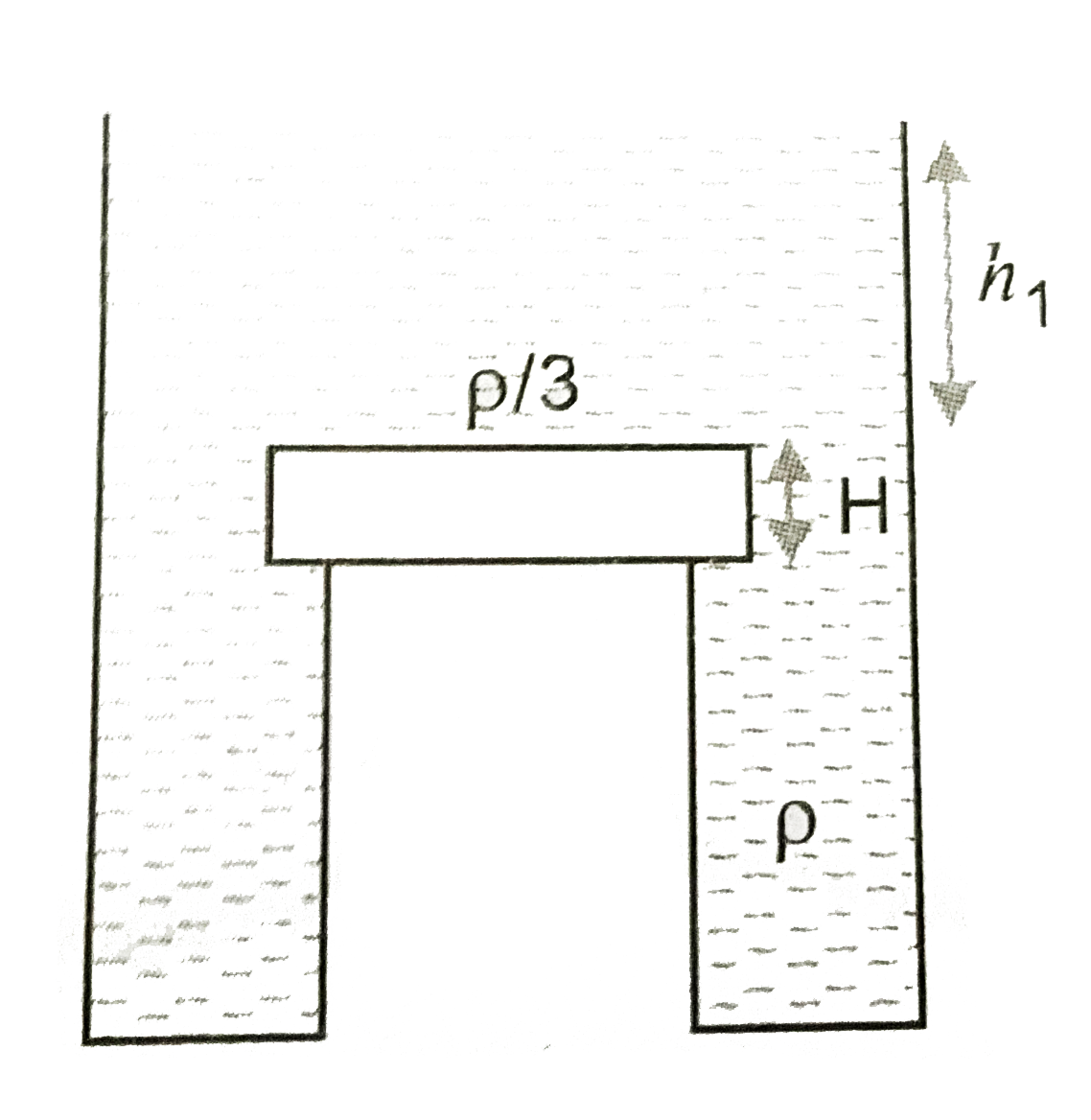
If level of liquid starts decreasing slowly, when the level of liquid is at a height h1 above the cylinder, the block just start moving up. Then the value of h1 is
View SolutionA liquid of density ρ is filled in a U-tube is accelerated with an acceleration a so that the height of liquid in its two vertical arms are h1andh2 as shown in the figure. If l is the length of horizontal arm of the tube, the acceleration a is
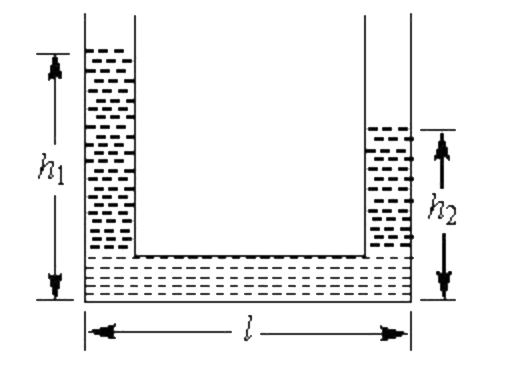
View Solution